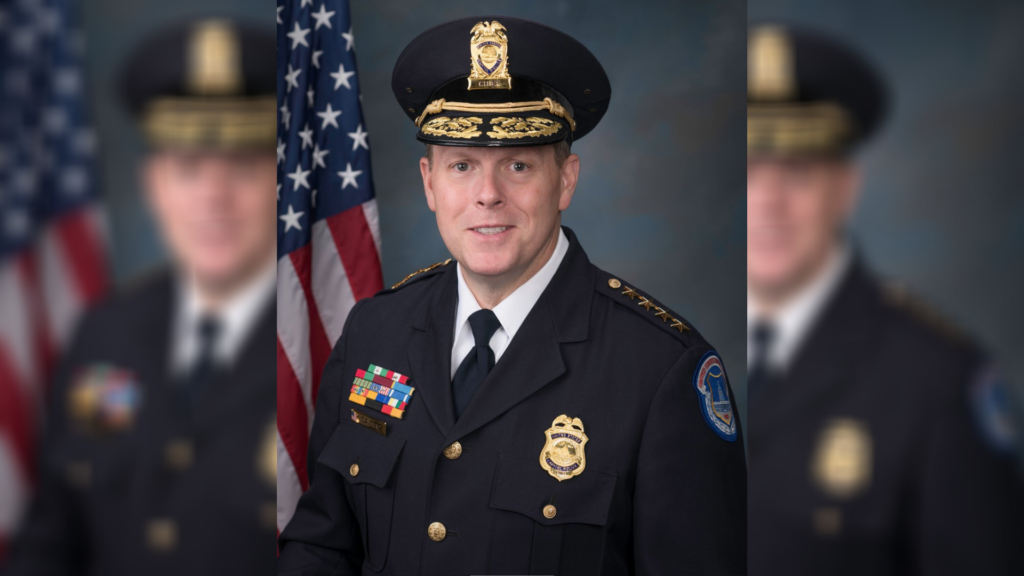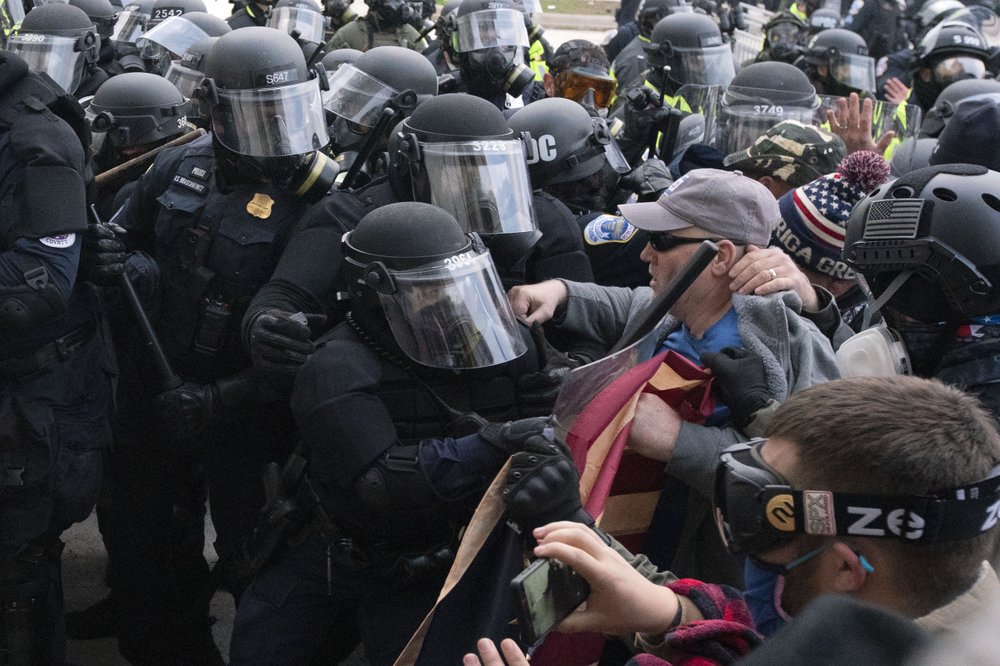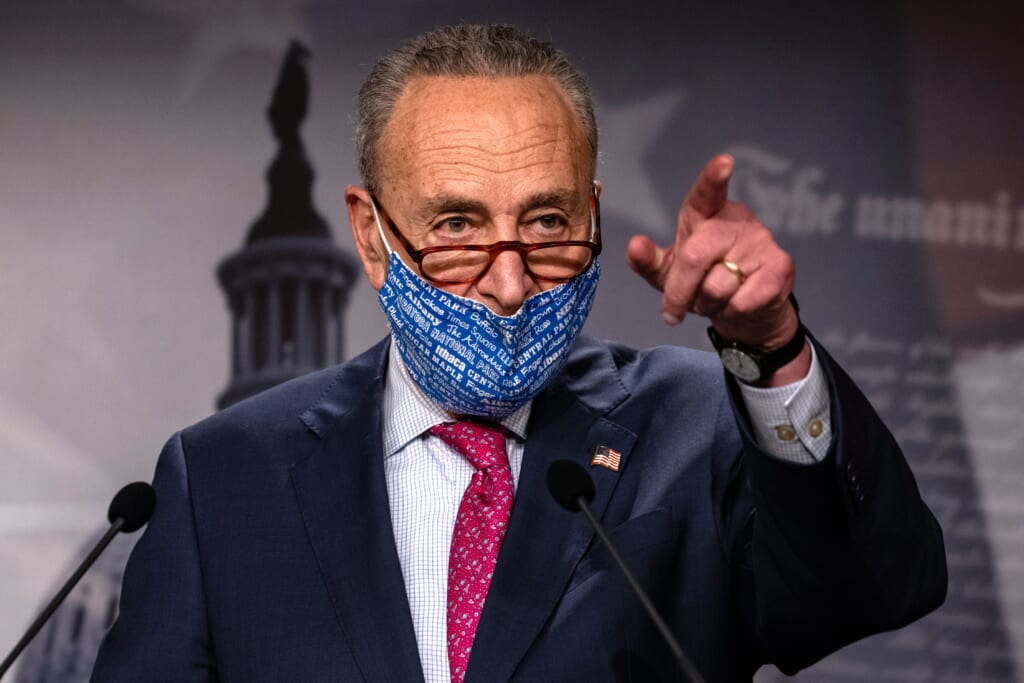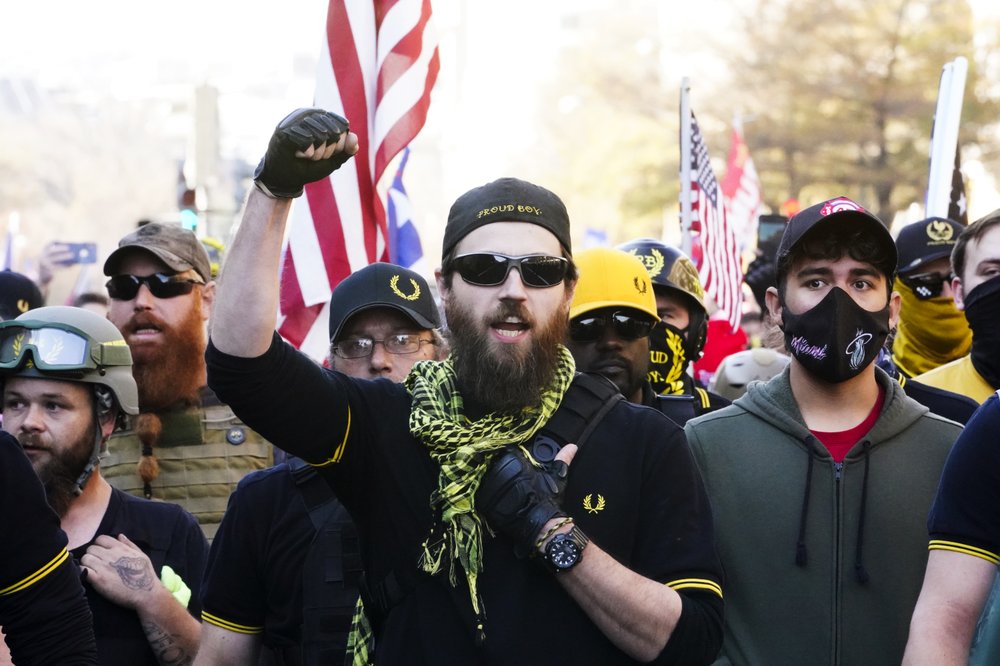Capitol Police chief resigning after mob attack
Chief Steven Sund said Thursday that police had planned for a free speech demonstration and did not expect the violent attack
The head of the U.S. Capitol Police will resign effective Jan. 16 following the breach of the Capitol by a pro-Trump mob.
Chief Steven Sund said Thursday that police had planned for a free speech demonstration and did not expect the violent attack. He said it was unlike anything he’d experienced in his 30 years in law enforcement.
He resigned Thursday after House Speaker Nancy Pelosi called on him to step down. His resignation was confirmed to The Associated Press by a person familiar with the matter who was not authorized to speak publicly.

Read More: Rep. Hakeem Jeffries says security at Capitol riots was a ‘failure operationally’
The breach halted the effort by Congress to certify President-elect Joe Biden’s victory. Protesters stormed the building and occupied for hours. The lawmakers eventually returned and finished their work.
Three days before supporters of President Donald Trump rioted at the Capitol, the Pentagon asked the U.S Capitol Police if it needed National Guard manpower. And as the mob descended on the building Wednesday, Justice Department leaders reached out to offer up FBI agents. The police turned them down both times, according to senior defense officials and two people familiar with the matter.
Despite plenty of warnings of a possible insurrection and ample resources and time to prepare, the Capitol Police planned only for a free speech demonstration.

Still stinging from the uproar over the violent response by law enforcement to protests last June near the White House, officials also were intent on avoiding any appearance that the federal government was deploying active duty or National Guard troops against Americans.
The result is the U.S. Capitol was overrun Wednesday and officers in a law enforcement agency with a large operating budget and experience in high-security events protecting lawmakers were overwhelmed for the world to see. Four protesters died including one shot inside the building.
The rioting and loss of control has raised serious questions over security at the Capitol for future events. The actions of the day also raise troubling concerns about the treatment of mainly white Trump supporters who were allowed to roam through the building for hours, while Black and brown protesters who demonstrated last year over police brutality were faced more robust and aggressive policing.
“This was a failure of imagination, a failure of leadership,” said Houston Police Chief Art Acevedo, whose department responded to several large protests last year following the death of George Floyd. “The Capitol Police must do better and I don’t see how we can get around that.”
Acevedo said he has attended events on the Capitol grounds to honor slain police officers that had higher fences and a stronger security presence than what he saw on video Wednesday.
Army Secretary Ryan McCarthy said that as the rioting was underway, it became clear that the Capitol Police were overrun. But he said there was no contingency planning done in advance for what forces could do in case of a problem at the Capitol because Defense Department help was turned down. “They’ve got to ask us, the request has to come to us,” said McCarthy.
By the day after the rampage, the House sergeant-at-arms, the chief security officer for the House of Representatives, had resigned and House Speaker Nancy Pelosi, D-Calif., had called for the resignation of the Capitol Police chief.
“There was a failure of leadership at the top,” Pelosi said.
Sen. Chuck Schumer, D-N.Y., the incoming majority leader, said he will fire the Senate sergeant-at-arms.

The U.S. Capitol had been closed to the public since March because of the COVID-19 pandemic that has killed more than 350,000 people. But normally, the building is open to the public and lawmakers pride themselves on their availability to their constituents.
It is not clear how many officers were on-duty Wednesday, but the complex is policed by a total of 2,300 officers for 16 acres of ground who protect the 435 House representatives, 100 U.S. Senators and their staff. By comparison, the city of Minneapolis has about 840 uniformed officers policing a population of 425,000 in a 6,000-acre area.
There were signs for weeks that violence could strike on Jan. 6, when Congress convened for a joint session to finish counting the Electoral College votes that would confirm Democrat Joe Biden had won the presidential election.
On far-right message boards and in pro-Trump circles, plans were being made.
The leader of the far-right extremist-group Proud Boys was arrested coming into the nation’s capital this week on a weapons charge for carrying empty high-capacity magazines emblazoned with their logo. He admitted to police that he made statements about rioting in the District of Columbia, local officials said.

Both Acevedo and Ed Davis, a former Boston Police commissioner who led the department during the 2013 Boston Marathon bombing, said they did not fault the responses of clearly overmatched front-line officers, but the planning and leadership before the riot.
“Was there a structural feeling that well, these are a bunch of conservatives, they’re not going to do anything like this? Quite possibly,” Davis said. “That’s where the racial component to this comes into play in my mind. Was there a lack of urgency or a sense that this could never happen with this crowd? Is that possible? Absolutely.”
Trump and his allies were perhaps the biggest megaphones, encouraging protesters to turn out in force and support his false claim that the election had been stolen from him. He egged them on during a rally shortly before they marched to the Capitol and rioted. His personal attorney Rudy Giuliani, a former New York mayor known for his tough-on-crime stance, called for “trial by combat.”
McCarthy said law enforcement’s intelligence estimates of the potential crowd size in the run-up to the protests “were all over the board,” from a low of 2,000 to as many as 80,000.
So the Capitol Police had set up no hard perimeter around the Capitol. Officers were focused on one side where lawmakers were entering to vote to certify Biden’s win.
Barricades on the plaza to the building were set up, but police retreated from the line and a mob of people broke through. Lawmakers, at first unaware of the security breach, continued their debate. Soon they were cowering under chairs. Eventually they were escorted from the House and Senate. Journalists were left alone in rooms for hours as the mob attempted to break into barricaded rooms.
“The violent attack on the U.S. Capitol was unlike any I have ever experienced in my 30 years in law enforcement here in Washington, D.C.,” Capitol Police Chief Steven Sund said, explaining there had been a robust plan what he had expected would be a display of First Amendment activities. “But make no mistake – these mass riots were not First Amendment activities; they were criminal riotous behavior.”
Have you subscribed to theGrio’s podcast “Dear Culture”? Download our newest episodes now!
TheGrio is now on Apple TV, Amazon Fire, and Roku. Download theGrio today!
